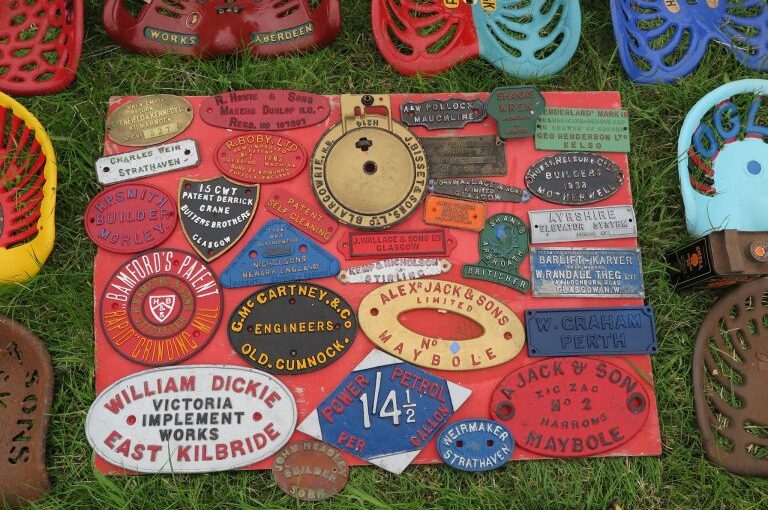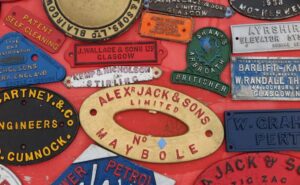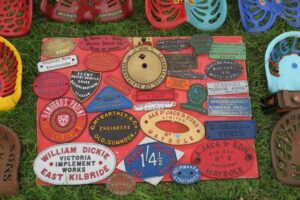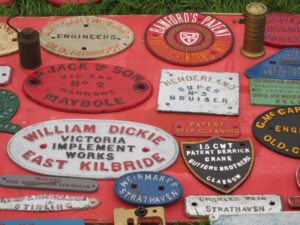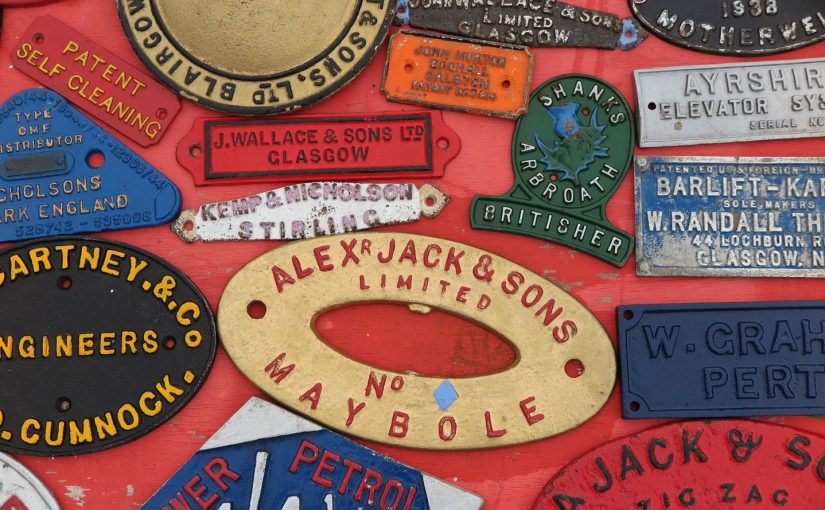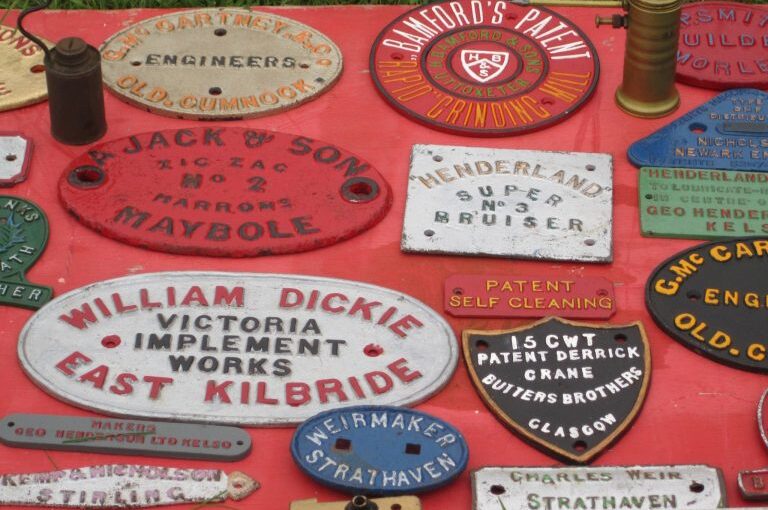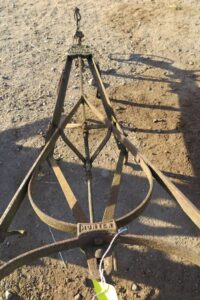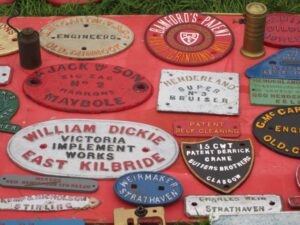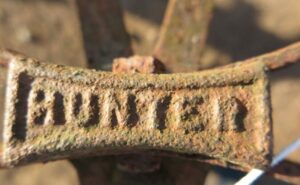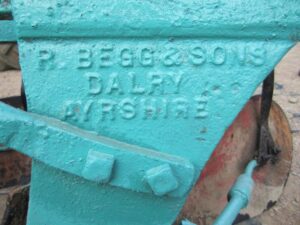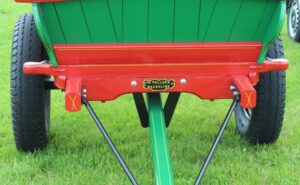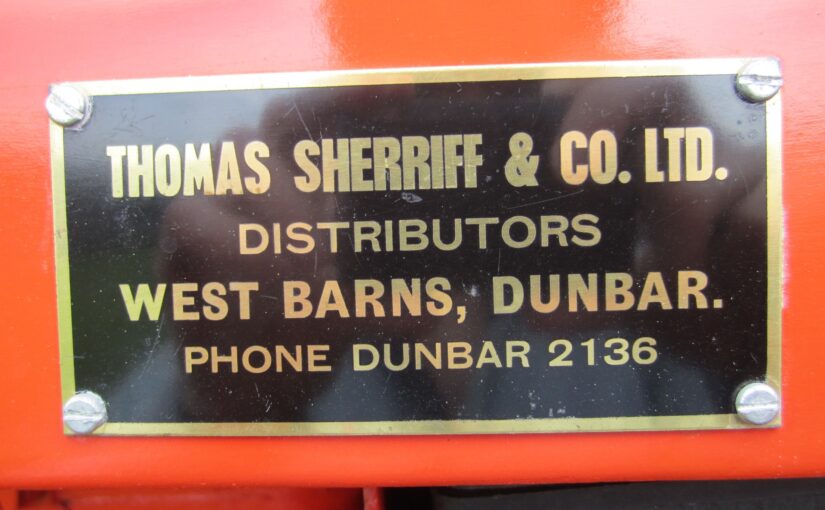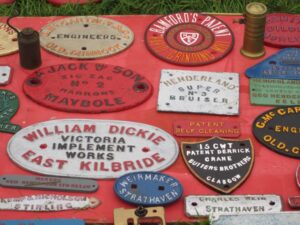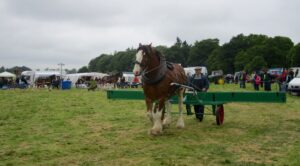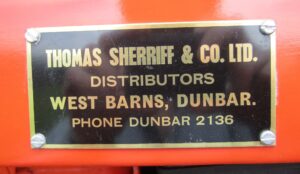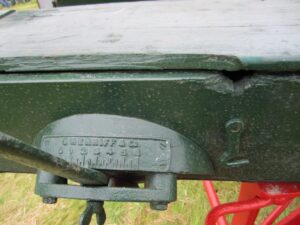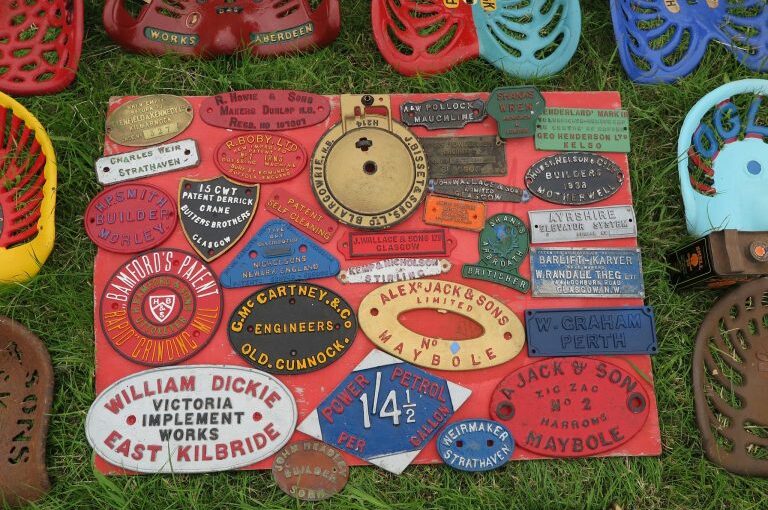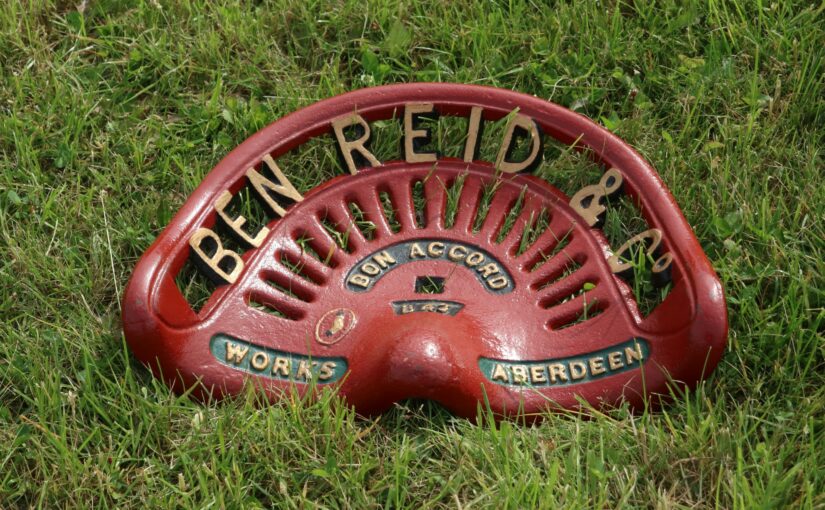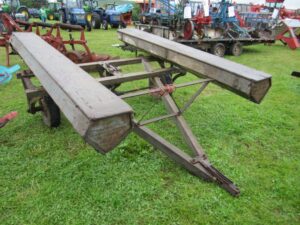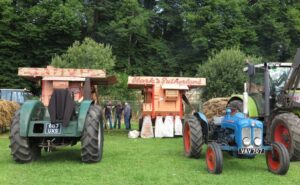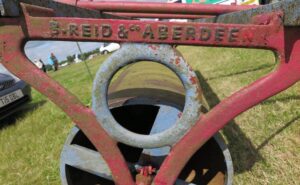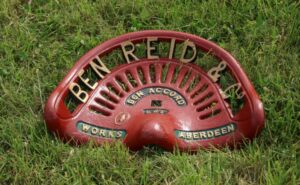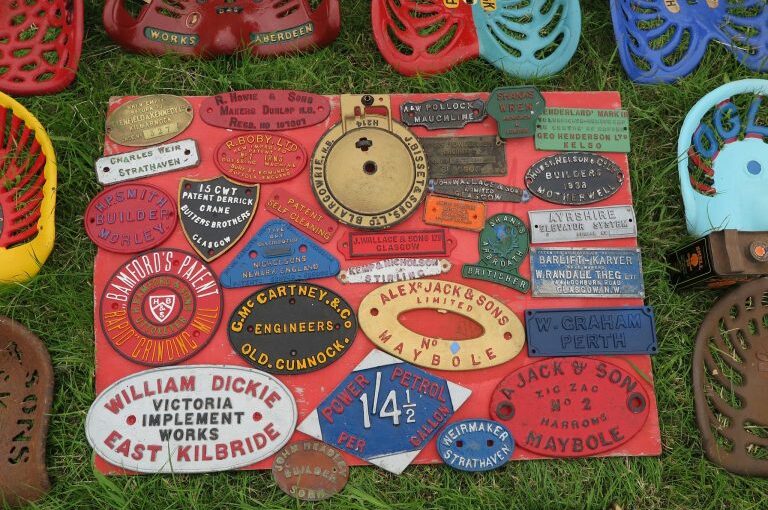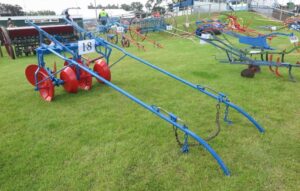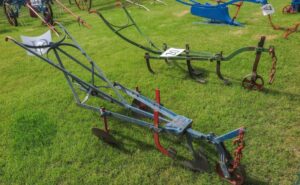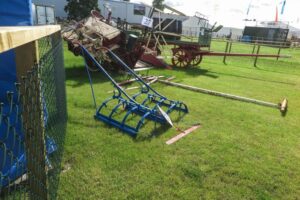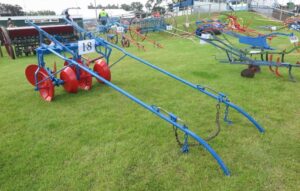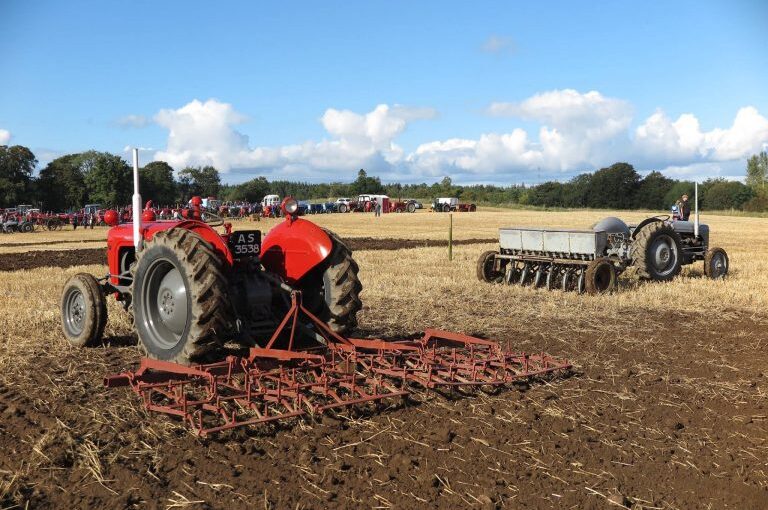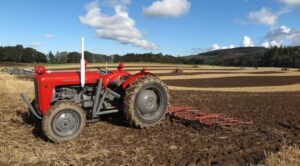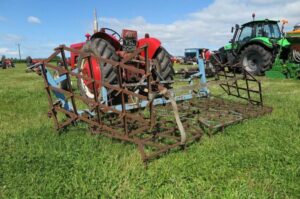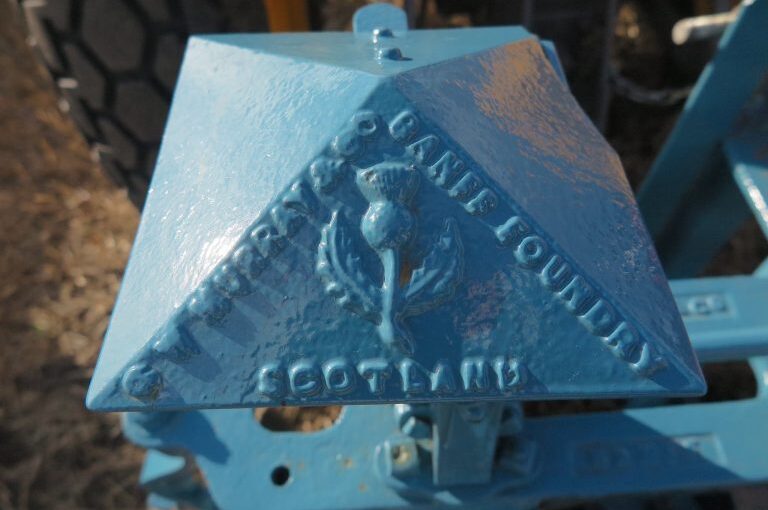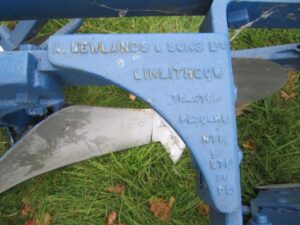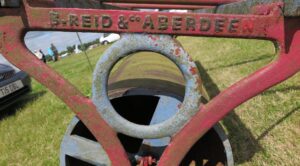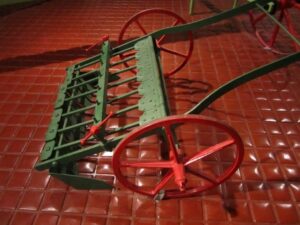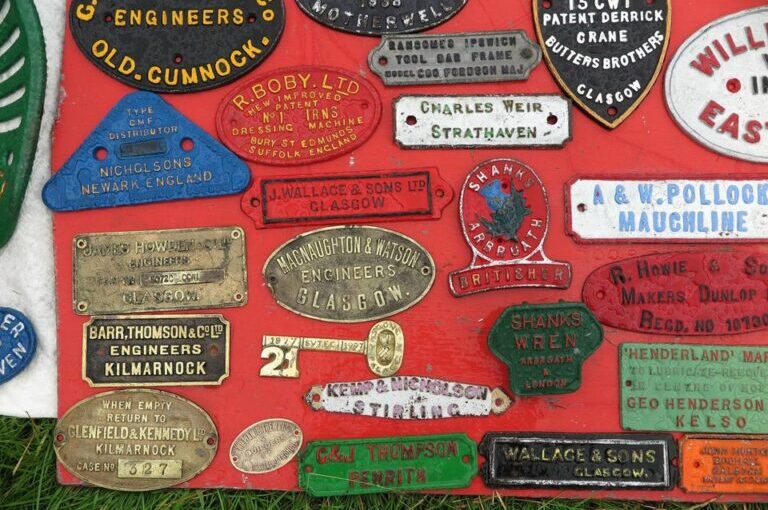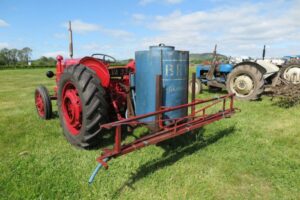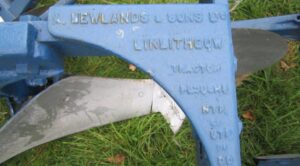Displenishing sales provide an insight into the implements and machines that were being used on a farm when the tenant was leaving a particular farm. They reflected the type of activities that were being undertaken, including chicken rearing, potato growing, or cheese making. They can also show whether the farm was using new and innovative ones or were relying on older ones. Some of the items that are listed were old, though others, as notices sometimes point out were new. They would also have included implements that might have been allocated to the “hedge back” that were put out for sale to realize some money.
In May 1924 a number of displenishing sales took place in north-east Scotland. It is worth looking at these to see what implements and machines were being used a century ago. There is a great emphasis on ones for ploughing, cultivation, carting, crop processing, and animal husbandry.
Green of Savoch, Auchnagatt (Aberdeen press and journal, 2 May 1924)
Implements-5 box carts (with tops), water cart, dog cart, 5 sets and set pony harness, sledge, 3 box harrows, turnip sower, 3 single, 2 D.B. and 2 shim ploughs; 2 sets iron, 2 sets wooden, chain, and grass seed harrows, 2 grubbers, broadcast sowing machine, turnip slicer, turnip plumper, 2 Massey-Harris binders, mower, 2 metal rollers, horse rake, snow plough, rick props and centres, quantity of firewood, 2 metal troughs, 2 metal pots, barn furniture, including 2 fans in splendid order, weighing machine and weights, sack barrow, forks, bushel measure etc, and all the tools necessary for the farm.
Hill of Park, Park (Aberdeen press and journal, 2 May 1924)
Implements-2 box carts with tops, Massey-Harris binder (in grand order), Ransome cultivator (almost new), 3-horse cultivator, Sellar grubber, drag harrow, 2 stone rollers, single and double ploughs, set iron, set link, and set potato harrows, shim, horse rake, hay gatherer, turnip sower, plough hurley, 2 water troughs, feeding boxes, and all smaller implements. Barn furniture-weighing machine and weights, corn scoop, sack barrow, turnip hasher, stone cheese press, and usual barn furnishings. Harness- 2 sets cart and plough harness, in good order, and the usual stable furnishings.
Rashinlochie, Drumoak (Aberdeen press and journal, 2 May 1924)
Implements etc-2 box carts with tops, long cart with hakes, long cart with sides, spring card, binder (by Wood), mower, 2 single, B.M.P., and rill ploughs, iron, wood, chain and spring-toothed harrows, grubber, shim, turnip sowing machine, turnip cutter, manure distributor, broadcast sowing machine, metal and stone rollers, hay cutter, hay knife, horse and drag rakes, 2 box barrows, grindstone, work bench, saws, stone and wooden troughs, iron and wooden barrels, 2 portable boilers. Barn furniture and harness-barn fan, 2 rick covers, binder cover, weighing machine and weights, sack barrow, riddles, rick yarn, and barn furnishings, 2 sets cart and plough harness, gig harness, and stable furnishings. Furniture and dairy utensils.
Harthills, Kintore (Aberdeen press and journal, 2 May 1924)
Implements-3 boxcarts with tops, 2 long carts, water cart (as new), dogcart, 2 single, 1 double plough, shim, 2 drag. Iron, wooden and chain harrows; grubber, turnip sower, wooden roller, Wallace binder, Albion reaper with mowing gear, water barrels, hen coops, 2 hand barrows, all minor tools; barn fan and barn furnishings; 3 sets cart and plough harness, gig harness, and stable furnishing; hay cutter, sledge, mangle; 100 Larch fencing posts, fencing wire. Quantity of household furniture and all the kitchen and dairy utensils.
Danestone, Woodside (Aberdeen press and journal, 2 May 1924)
Implements-3ft portable threshing mill (by Crighton), Case Tractor, 10-18 H.P., with extending axles; Cockshutt double-furrow tractor plough, tractor double disc harrows, 7 box carts with tops and double shelvings, 2 long carts, rally car, 2 binders (McCormick), 2 mowers (Albion), broadcast sowing machine, 2 metal rollers, drill scarifier, 3 grubbers, 4 sets iron, spring-tined, potato and chain harrows; 5 M.P. and 2 D.B. ploughs, 3 shims, potato digger, horse and drag rakes, potato dresser, barrows, barn fan, steelyard and weights, turnip pulper, turnip hasher, paraffin drum and barrels, feeding troughs, grindstone, chicken coops, cart ropes, and yarn, turnip sower, power horse clipper, portable forge, 15ft boat, and all minor farm implements, also a quantity of fencing posts and wire and rick posts, 8 sets cart and plough harness and all the usual stable requisites.
Note-the threshing mill, tractor and tractor implements are of recent purchase, and are in splendid working condition.
